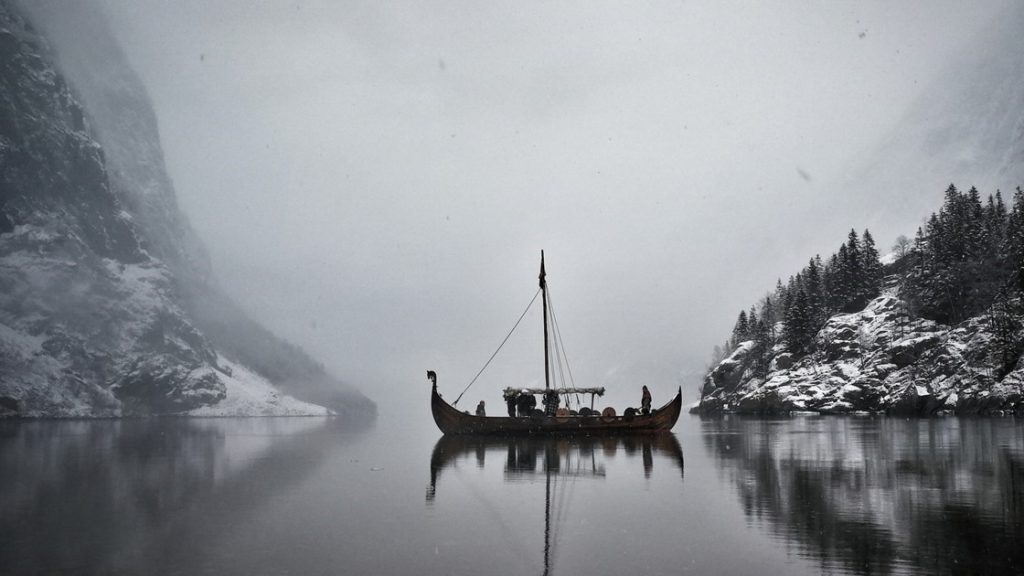Location
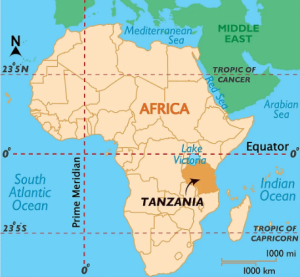
Tanzania is an East African country located on the coast of East Africa. Comoros and Seychelles share maritime borders with the country. Its border countries are Rwanda, Burundi, Kenya,
Uganda, Malawi, Zambia, Mozambique and the Democratic Republic of Congo through Lake Tanganyika.
Population and size
Tanzania’s mainland size is 945,000km2, and Zanzibar Island has 640 sq. mi. It has the highest mountain in Africa, with a height of 5895m above sea level. In 2022, the country’s population was about 58 million. Its capital is Dodoma which is popularly known for its agricultural products such as tobacco, nuts, beans, tea and nuts. Dodoma’s population is more than two million, and it serves as the center of the country’s wine-producing activity. The city is known to produce the best wine, with its harvest being twice a year produced mainly to be consumed locally. Dar-es-Salaam serves as the chief port and the de facto capital. English and Kiswahili are the official spoken languages, while the Arabic language is the widely spoken language in Zanzibar. Tanzania’s currency is the shilling, whose code is TZS and is divided into 100 cents. The country has three main international airports served by numerous airlines, including European airlines. The biggest airport is Julius Nyerere International Airport, known to handle about 2.5 million passengers annually. Kilimanjaro International Airport is used mainly by the tourists visiting Mount Kilimanjaro National Park and the general Northern circuit tourism destinations. Zanzibar Abeid Amani Karue Airport is Zanzibar Island’s main airport that opens the extensive groups of islands daily to global tourism.
Language
English and Kiswahili are the two official languages in Tanzania. The lingua franca of Tanzania is the Swahili language. Virtually all the people of Tanzania speak Kiswahili. It is the country’s national language. Kiswahili is a composite of various Bantu dialects and Arab languages with its origin based on the East African Coast and the Zanzibar Islands. It is the medium of instruction in the higher levels of education, the primary education and is used widely in the government offices.
Tanzania has different ethnicities, and they all speak their ethnic traditional languages. The minority Asian communities in the country include Punjabi, Gujarati, Urdu and Hindi, which
constitute one per cent of the total population. There are more than one hundred and twenty ethnic communities in Tanzania, consisting of the Bantu, San, Nilo-Hamite and the Cushite. The country does not have a dominant ethnic community, although the Sukuma-Bantu-speaking community are the largest in the country who are comprised of approximately sixteen per cent of the total population. The second-largest ethnic community is the Nyamwezi, followed by the Chagga. The Bantu group constitute more than one hundred Bantu ethnic communities with different traditions and customs. They include the Sukuma, Chagga and more than a hundred others. The Kushites include the Iraqw, Burunge, Alagwa and the Gorowa, while the Nilo-
Hamites include the Maasai and the Luo.
Men tend to greet each other through handshakes. The handshakes are energetic. Men can also walk hand in hand, and this indicates a sign of friendship and closeness and does not implicate their sexual preferences. Women can either bow or greet through a handshake. Greetings between men and women vary depending on their relationship nature. Islamic women if Tanzania will bow and greet men since handshakes are not appropriate in their religion. In other communities, either a bow or a nod of acknowledgement tends to suffice as a handshake or a bow will do for a greeting, but women will need to extend their hands when greeting men.
In Tanzania, the polite way of conversing is through indirect communication, mainly when conversing with either the elders or the superiors. The indirect communication has been used by the traditional people of Tanzania and those living in the rural areas, whereas the urban Tanzania individuals will tend to use direct communication. Like most individuals in the country, Tanzanians will enjoy some humour in a conversation.
Tanzania’s culture has various taboos followed by almost all the ethnic communities in the country. The taboos are primarily practised in the traditional African communities in the rural
areas. When taking meals, one is needed to use the right hand. One is also supposed to use the right hand when greeting someone else or touching the person. Not all the people may be strict in following the rules, but the majority of individuals in the rural will strictly follow the culture. The left hand is not supposed to touch anything, including during the purchase of products from the market. Boys are also not supposed to braid their hair. A man who has braided hair is considered to be gay and is one of the major taboos in the country’s culture. Women should also wear decently, and they should not walk around wearing tank tops, pants or shorts. The modest way the women are needed to dress is wearing skirts that were below the knees and shirts with sleeves. In the urban areas, people don’t follow these rules, and women will be seen wearing long pants in the urban areas while in the coastal areas like those of Dar-es-Salaam and the Island of Zanzibar, people tend to wear light, loosely fitting clothes that breathe well due to the high temperatures including short for the women.
Climate
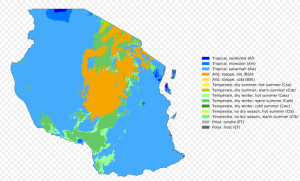
Although there are substantial variances from area to region, Tanzania has a climate that is typically pleasant throughout the year. During the wetter months of the year, the climate along the tropical coast is consistently warm and muggy, with abundant and consistent precipitation. The climate in the central plateau is drier and chillier.
History

Tanzanian’s first human beings were known to be hunters and gatherers. Agriculture began about 1000BC. Farmers were making stone and wooden tools. The coastal region of East Africa in Tanzania was in contact with the Mediterranean civilizations during the Christ error, and in around 800CE, the Arab traders had built Kilwa’s coastal port. The distinctive mixture of the Arabs, Africans and Persians resulted in the development of the Swahili language and culture by 1200 CE. From 4 AD, the Bantu started to migrate and brought iron tools and weapons to the land. In the 11th century AD, Maasai ancestors started to migrate to the country from Southern Sudan, while the majority arrived between the 15th and the 18th century.
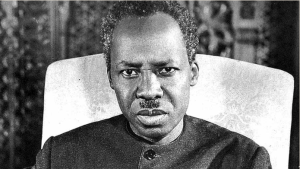
In 1948, Vasco da Gama sailed to the East African coast, and soon the Portuguese the Tanzanian coastal region. Zanzibar, a Tanzanian coastal region, became the center for the Omani Arab slave trade by the early years of the 17th century CE. In the mid-1880s, A German, Carl Peters, started to explore Tanzania, and by 1891, German established the colony of German East Africa. In 1890, Zanzibar was made a British protectorate in the campaign to end the slave trade in the coastal region of Tanzania. The current Tanzanian mainland was renamed Tanganyika after the First World War when German East Africa was made a British mandate. A political party,
Tanganyika African National Union, TANU, was created, which in 1954 started to oppose British rule. In 1958, Tanganyika attained internal self-government as Julius Nyerere became the Prime minister (Tanzania Embassy in Berlin, Germany). The country achieved its independence in December 1961 under Julius Nyerere as the president. In April 1964, Zanzibar merged with mainland Tanganyika to form the United Republic of Tanzania.
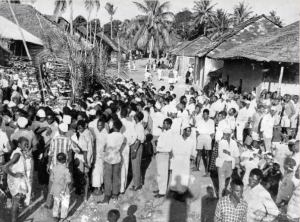
After independence, Mwalimu Julius Nyerere adopted a socialism policy known as Ujamaa in the country’s native language, Swahili. The policy was an African Socialism policy that was based on cooperative agriculture. Julius Nyerere, during his rule, declared the Revolutionary
State Party (Chama Cha Mapinduzi) the only legal, political party in the republic. In 1985, Julius Nyerere retired from the president seat, and the constitution was amended in 1992 to allow a
multi-party democratic constitution (Tanzania Embassy in Berlin, Germany). Ali Hassan Mwinyi became the next president. Benjamin Mkapa took the presidency in 1995, followed by Jakaya Kikwete, who was elected Tanzanian president in 2005. John Magufuli was elected in 2015, and
Suluhu Hassan took over after Magufuli’s death. Suluhu Hassan is the current president.

